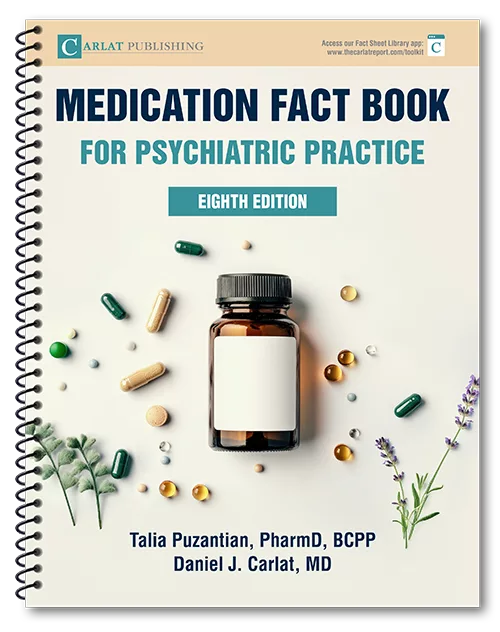CBT With Exposure and Response Prevention for OCD

Daniel Carlat, MD. Vice Chair, Community and Public Sector Psychiatry, Tufts University School of Medicine. Publisher, Carlat Publishing.
Dr. Carlat has no financial relationships with companies related to this material.
Learning Objectives
After reading this article, you should be able to:
1. Understand the recommended first-line treatment approach for adults with OCD.
2. Recognize the fundamental elements of ERP for OCD and distinguish them from alternative therapeutic approaches.
3. Identify the most suitable type of exposure therapy for clients with obsessive thoughts without rituals, considering factors that may limit the use of in vivo exposure.
Although obsessive-compulsive disorder (OCD) was once considered highly treatment-resistant, randomized controlled trial findings now support the efficacy of several treatments, including cognitive behavioral therapy (CBT), pharmacotherapy with serotonin reuptake inhibitors (SRIs), and combined treatment. According to the National Institute for Health and Care Excellence (NICE) guidelines (last updated in 2019, see https://www.nice.org.uk/guidance/cg31) CBT that includes exposure and response prevention (ERP) is considered the psychological treatment of choice for OCD.
The Basics of Exposure and Response Prevention
So, what is ERP? It's a type of CBT that gradually exposes clients to situations or objects that trigger obsessional fears and urges to ritualize, followed by instructions to abstain from compulsive behaviors. The primary components of ERP include in vivo exposure, imaginal exposure, ritual prevention, processing, and, when feasible, home visits. Through this approach, clients learn several important points, including:
- They can master anxiety provoked by obsessions without performing rituals.
- The anxiety/distress/urge to ritualize does not last forever.
- Anxiety subsides, even without escaping, avoiding, or ritualizing.
- Feared consequences are either disconfirmed or shown to have a low probability of occurring.
To effectively implement ERP, I'd recommend the following seven steps:
- Explain the rationale behind ERP to your clien. It's essential to help them understand that by facing their fears and not engaging in rituals, they can learn to cope with distress and that they do not need to perform rituals to keep themselves safe. Many clients may initially resist the idea of ERP due to their long histories of attempting to confront obsessions and stop compulsive behaviors, only to see anxiety skyrocket.
- Introduce the Subjective Units of Distress Scale (SUDS). This self-assessment tool helps clients monitor and regulate their emotional responses during exposure therapy. The SUDS uses “anchors”, which are numeric or word labels that represent different levels of feelings, to make the scale more meaningful for client. For example, in the case of anxiety, anchors could range from 0, representing complete relaxation, to 100, representing the worst anxiety imaginable. Other scales can use different ranking ranges, such as 1 to 10. By using SUDS, clients can track their progress and gain a sense of control over their emotional experiences, making ERP therapy more effective.
- Create a list of feared situations. Assist your client in constructing a hierarchy of triggering situations, thoughts, or objects, ranked from least to most distressing (based on SUDS ratings). For example, a client with contamination fears might rank touching a door handle without washing their hands lower than touching a toilet seat and then touching their face without hand washing.
- Conduct in vivo exposures. Design exposure exercises based on the client's hierarchy, both during sessions and at home. It is usually helpful for clients to begin exposure therapy with items/activities on their hierarchy that are distressing enough to cause anxiety but easy enough to complete successfully until they gain more confidence. Ensure they remain in the feared situation until their SUDS level decreases by at least 50% (eg, client initially ranks situation an eight out of 10 and to a four out of 10).
- Instruct clients on response (ritual) prevention. Guide your client to avoid the ritualizing they believe prevents feared disasters or reduces distress. For example, a person who fears something bad will happen if they do not arrange their shoes in a certain order may be asked to leave these items in disarray or in the “wrong” order.
- Process the experience with your client. Ask them how it lines up with their initial expectations. For example, you could say, "You touched the toilet seat and didn't wash your hands for an hour. Is your distress level still as high as when you started? Are your urges to wash as strong as you thought they'd be?"
- Keep practicing exposures. Studies show that fears and compulsions almost always decrease with consistent ERP. Keep at it until the item on the hierarchy is no longer a problem and the client’s anxiety has significantly reduced (Foa E. B. (2010). Cognitive behavioral therapy of obsessive-compulsive disorder. Dialogues in clinical neuroscience, 12(2), 199–207. https://doi.org/10.31887/DCNS.2010.12.2/efoa; Koran, L. M., Hanna, G. L., Hollander, E., Nestadt, G., Simpson, H. B., & American Psychiatric Association (2007). Practice guideline for the treatment of patients with obsessive-compulsive disorder. The American journal of psychiatry, 164(7 Suppl), 5–53.).
During exposures, make sure to steer the client away from safety behaviors or subtle avoidance techniques, like thinking about something else, chatting with someone, or only touching the toilet seat with one finger. These behaviors can prevent them from fully experiencing distress and make it harder to conquer fears in the long run. Also, teach family members not to enable “OCD by proxy” by answering questions about contamination or washing the client’s clothes for them, as this could reinforce OCD-related distress.
The specific form of exposure therapy can vary depending on the symptom and triggering situations. For clients with intrusive thoughts triggered by certain events or objects, in vivo exposure usually works well. However, some people may have obsessive thoughts without rituals, and the target behaviors are the thoughts themselves. In these cases, consider using imaginal exposure, audio loop recordings of the bad thought, or videos with triggering themes. These techniques can be helpful when it's difficult or impossible to use in vivo exposure (e.g., worrying about harming others or satanic possession).
Further Training in ERP
Some therapists may be able to use some of the tips in this article to begin to integrate ERP principles into their therapy sessions. However, in order to become truly proficient in the technique, you will need more training. Here are some good resources that you should find helpful.
- Books:
- Foa, E. B., Huppert, J. D., Leiberg, S., Langner, R., Kichic, R., Hajcak, G., & Salkovskis, P. M. (2012). Exposure and Response (Ritual) Prevention for Obsessive Compulsive Disorder: Therapist Guide. Oxford University Press.
- Abramowitz, J. S., Deacon, B., & Whiteside, S. (2011). Exposure Therapy for Anxiety: Principles and Practice. Guilford Press.
- Research articles: Use online databases such as PubMed, PsycINFO, and Google Scholar to search for research articles on ERP and OCD treatment. Some keywords to use in your search include "Exposure and Response Prevention," "OCD treatment," and "cognitive-behavioral therapy."
- International OCD Foundation (IOCDF): The IOCDF (https://iocdf.org/) offers training programs, workshops, conferences, and webinars related to OCD treatment, including ERP. They also provide a directory of therapists who specialize in OCD treatment, which can help you find experienced professionals to consult or seek supervision from.
- Association for Behavioral and Cognitive Therapies (ABCT): ABCT (http://www.abct.org/) is a professional organization dedicated to promoting cognitive-behavioral therapy. They provide resources, workshops, and conferences related to CBT and ERP. Additionally, their "Find a Therapist" directory can help you locate experienced therapists for consultation or supervision.
- Beck Institute for Cognitive Behavior Therapy: The Beck Institute (https://beckinstitute.org/) offers training and workshops on CBT, including specialized workshops on treating anxiety disorders like OCD. They also offer online courses and webinars on various CBT topics.
- Anxiety and Depression Association of America (ADAA): The ADAA (https://adaa.org/) is a professional organization focused on anxiety and depressive disorders. They offer resources, webinars, and an annual conference that includes presentations and workshops on OCD and ERP.
- Local universities and training institutes: Many universities and psychology training institutes offer workshops and seminars on CBT and ERP. Check the continuing education programs and events calendars of local institutions for relevant opportunities.
- Online platforms: Platforms like The Carlat Psychotherapy Report, Coursera, Udemy, and Psychwire offer online courses in CBT and related topics. While they may not specifically focus on ERP for OCD, they can provide a solid foundation in CBT principles that can be applied to ERP.
CARLAT TAKE:
CBT, particularly when it includes ERP, offers an easy-to-understand approach for clients. It's a versatile method that can be applied to a wide range of OCD symptoms.
Newsletters
Please see our Terms and Conditions, Privacy Policy, Subscription Agreement, Use of Cookies, and Hardware/Software Requirements to view our website.
© 2026 Carlat Publishing, LLC and Affiliates, All Rights Reserved.


_-The-Breakthrough-Antipsychotic-That-Could-Change-Everything.webp?t=1729528747)



